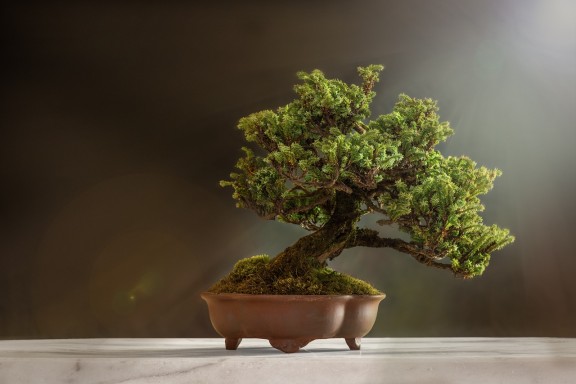“A Work Of Artifice” is a short lyrical poem written by Marge Piercy. The poem illustrates the process of growing a bonsai tree which is likened to the metaphor of restricting women’s growth. It has a distinctive mocking tone as it demonstrates the process of pruning a tree akin to curbing the opposite gender’s ability despite their potential. As Piercy was herself a feminist activist it is no surprise to find hints of feministic ideology in her poem. As a result, the poem is a wonderful read in terms of providing a non-canon perspective of the world seen through the eyes of women like Piercy.
A Work Of Artifice | Summary and Analysis
As the writing style of the poem is very blunt and to the point it makes the poem more ironic as the poet states the reality which has long been ignored. Written in the prime focus of the second wave of feminism, Piercy has written a powerful poem in just twenty-four lines. The poem serves as an impressive declaration of women’s capabilities. By the very act of writing this poem, Piercy has proven her point by displaying her talents.
A Work Of Artifice Analysis Stanza 1
The bonsai tree
in the attractive pot
could have grown eighty
feet tall
on the side of a mountain
till split by lightning.
The poem itself is not divided into stanzas but to make the analysis easier we are going to divide it into a few of them. Henceforth the first stanza mentions a “bonsai tree”. A bonsai tree refers to the East Asian technique of grooming a species of tree into a small container. The poem goes on to say that the tree could have grown up to twenty-four meters tall until it would be struck by lightning by the mountainside.
In the very first few lines, Piercy used a wicked metaphor depicting
the stunting of growth. The bonsai tree is usually used for aesthetic purposes but the method used to grow it is cruel indeed. However, at the beginning of the poem, there is no reference to women’s discrimination. The poet is simply stating the true heights the tree could reach were it not for the restrictions it was put into. Piercy has also used alliteration in the last couplet of the stanza by emphasizing the sound “i”, this is an instance of assonance where the same vowel sounds are repeated.
A Work Of Artifice Analysis Stanza 2
But a gardener
carefully pruned it.
It is nine inches high.
Now the tree, which could have grown much larger, was delicately “pruned” by a “gardener”. By these lines alone one cannot understand the real context of the poem. It only seems as if the gardener is doing his job and maintaining the trees. However, the further we read the poem we come to understand that the “gardener” here is a reference to male supremacy and how it has been effective in maintaining its supremacy; by eliminating skills that could surpass their own.
Here Piercy has also brilliantly used end-stopped lines which creates the illusion of clipping the tree itself. It seems as if Piercy has also “pruned” her poems due to the sheer force of the “gardener,” who stopped the tree at “nine inches high.”
A Work Of Artifice Analysis Stanza 3
Every day as he
whittles back the
branches
the gardener croons,
It is your nature
to be small and cosy,
domestic and weak;
how lucky, little tree,
to have a pot to grow in.
This is one of the most important and sarcastic lines of the poem highlighting its context. As the gardener continues to perfect the tree every day, he continues to hum along the prejudices associated with women. He claims that it is the tree’s “nature”, as if it’s only natural, for it to be “small” and “weak”. These traits for the gardener make the little tree lucky as it has a beautiful pot to grow in. Here Piercy has specifically used adjectives that are presumed to define a women’s characteristics like “domestic,” “weak,” and “lucky”. By reading these words alone one gets a clear understanding of the message behind the poetic words of Piercy. She is protesting against the use of such demeaning words which are used to describe women in general. She also explains that these so-called characteristics are what the male-dominated society thinks is “lucky” for women. They believe that being small, assumed by men themselves, is the only purpose of women. According to them, a woman is meant to do the housework and to be beautiful as if she is a “prize” waiting to be claimed by men. What male supremacy does not realize, however, is that these assumptions are only believed by them. Had women been given a freer environment to grow in, these men never would have had the chance to “prune” their branches down to a size unsurpassable by them.
What they consider lucky is like a cage to women, like the pot, that has bundled their wings into a jumble of feathers. Moreover by giving them agency, giving them “protection” – that is a pot, men consider women to be lucky when in fact these are the chains that encompass them in a protective bubble. Piercy skillfully uses irony to thwart the biases associated with women by stating them in-a-matter-of-fact tone which accentuates the injustices suffered by them. Hence the stanza also employs enjambment between alternative lines, giving the impression that, Piercy herself is having difficulty in writing these lines as she fights the inequality ingrained in her consciousness.
A Work Of Artifice Analysis stanza 4
With living creatures
one must begin very early
to dwarf their growth:
the bound feet,
the crippled brain,
the hair in curlers,
the hands you
love to touch.
The last stanza of the poem is an illustration of the way the male-dominated society assures the security of their power. As the poem describes to accomplish this hegemony, men begin their brainwashing very “early” to inhibit their growth. They “bound” women’s feet, “cripple” their brains and arrange their hair in “curlers”. Despite all those, they also love to touch their hands. These lines serve as a powerful criticism of gender discrimination rampant in our current society, despite the waves of feminism that rocked the world.
The very word “living creatures” dehumanizes women as if they were nothing more than a handful of organisms that belong in a clique. To maintain these impressions women are made to carry out certain rituals, one could say, from a very early age. Binding of feet refers to a Chinese method of binding women’s feet in a desired shape which was attained by breaking and tying up the feet of women. This was considered a sign of beauty among them. From ancient times women have been ostracized on the pretext of beauty and grace. Not only that they were also made to accept these prejudices set up by men.
The image of the ideal woman was of a domesticated girl, with small feet and pretty hair. Although they have been undermined by male supremacy yet the men turn to women for comfort only. They still touch their hand lovingly, getting their emotional and mental support but keep them in golden chains so that they are never really free. By pointing out the dominant standards of beauty, Piercy is trying to tell women all over the world that there is a world of opportunity for women besides these constraints if only they choose to break free from them, only when they do will women be able to reach “eighty-feet-tall” heights of self-worth and appreciation for themselves.
The poem is an allegory for the discrimination faced by the opposite sex in a male-dominated society. It not only tells of the ways women have been undermined but also of the summits they could cross given the chance. The title of the poem is also a perfect match for its theme as it exactly lists the ways deceptions have been used by people to keep women from displaying their potential. The poem uses the metaphor of the tree to represent a woman and the gardener as a prohibitor, a man, who will use the methods described in the poem to stifle women. By using a powerful combination of nature imagery and metaphor infused in enjambment lines in a free verse, the form of the poem itself is giving us a message. It feels as if the poet is trying to say the truth but stumbles in her speech afraid of the consequences of speaking out loud. So the poem explores issues of gender inequality and listed the reason why women all over the world are still powerless. Piercy’s message is clear, only by refuting these “standards” can a woman surpass her “bonsai” skills and reach the summit.
A Work Of Artifice | About the Author
Marge Piercy, an American poet and novelist, is an activist who works towards eradicating the disparity still existing between the opposite genders of the world. Her best-known work “Woman on the Edge of Time” is considered a classic feminist text along with being a precursor of the cyberpunk genre in literature. She has written many novels focusing on women’s inequality as well as poetry collections. The poem in particular was taken from her 1999 collection called “The Art of Blessing the Day: Poems with a Jewish Theme”.



